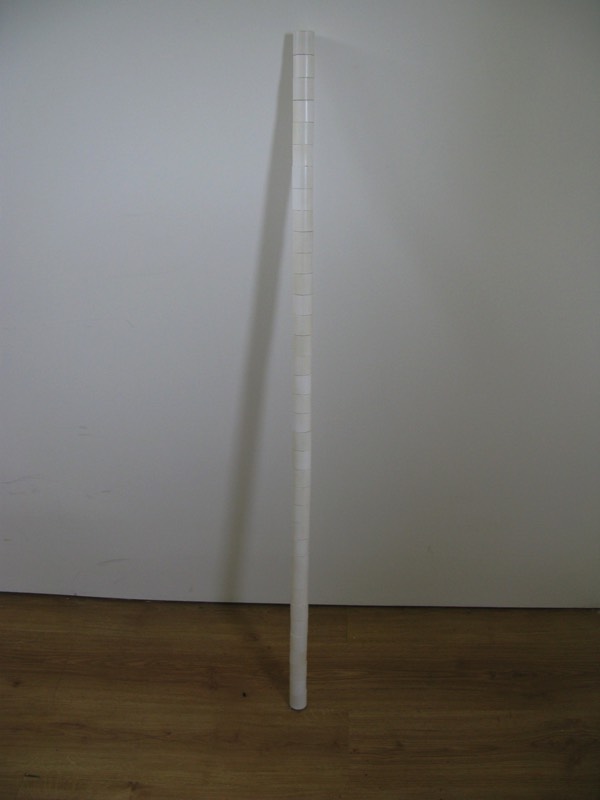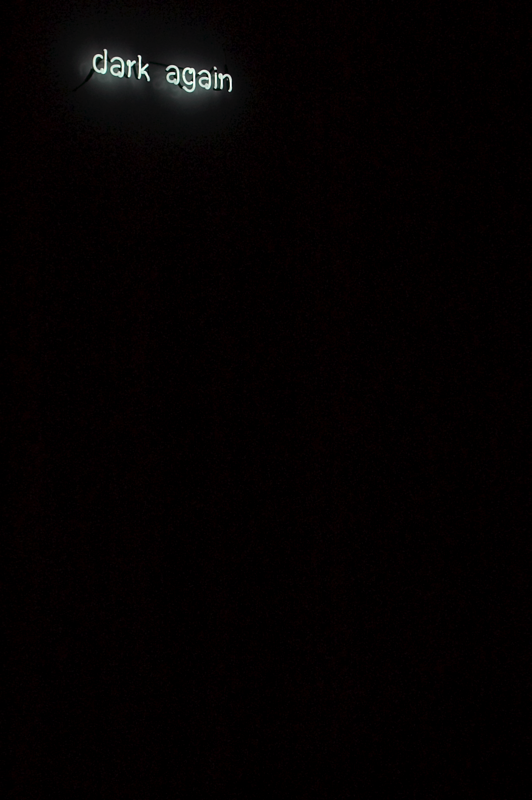
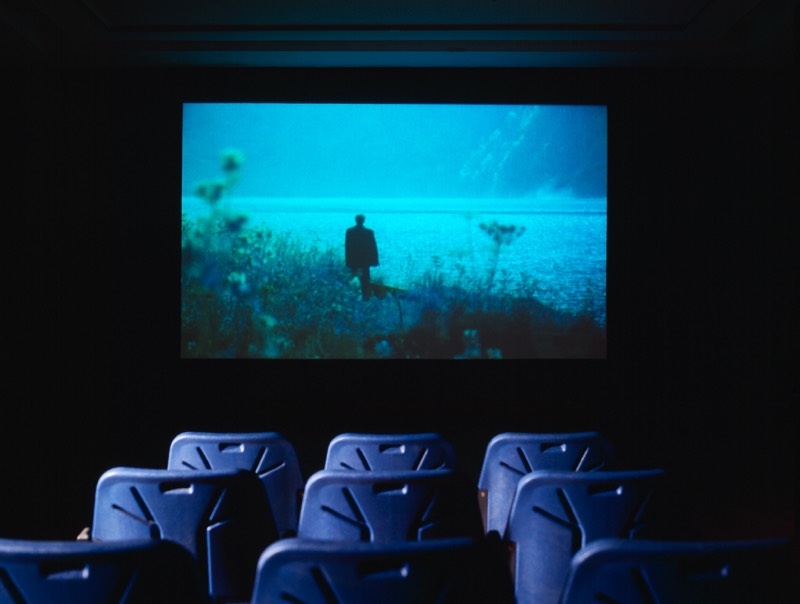
The installation at the 51st Venice Biennale, was centred on a film Nightfall, a sculpture The Ghost of Cadere and a number of neon works; Dark again, Dust Veil and Lunar Eclipse
Nightfall, a film shot on Lake Königsee in Bavaria is shot at twilight. The film tracks a solitary figure as he walks down through a forest, then pauses to examine two stones at the shore of the lake. He puts one in his pocket, drops the other, steps lightly into a boat, and begins to row across the water. This is a classic doubling device, your destination at your back as you row, thus watching where you’ve come from. To his surprise, he spies an identical figure walking down to the shore, and picking up the remaining stone. The rower, continuing his previously overdubbed musings on the falling of darkness, says in his first out loud words: 'Beyond which lies darkness.' His doppelgänger replies: 'Beyond darkness, the other side of silence', then drops the stone, sending ripples across the lake." William Fox
“Melancholy is often associated with such landscapes and with the onset of darkness. In an essay on the romantic poet Gérard de Nerval, Julia Kristeva, for instance, interprets his metaphor of the ‘black sun’ as a summing up of ‘the blinding force of the despondent mood – an excruciating, lucid affect asserts the inevitability of death.’ She goes on to outline a process in which there is a doubling of the self in this melancholy state, a narcissistic development that could be similarly identified in the rower of Nightfall.
There is, after all, a more mythic reading of the film in which both Narcissus and Echo play a vital role. Certainly, it could be argued that there is a process of internalisation at work throughout the piece. Often this is most evident in the cinematography where the landscape is a filtered, drained blue, contrasting with the more vivid skin tones of the main character and with the sharply defined green wood of the rowing boat that carries him away from the land. It is as if the surrounding world were insubstantial, dissolving in the twilight, leaving the protagonist in the realm of his own imagination.” Francis McKee
Nightfall, a film shot on Lake Königsee in Bavaria is shot at twilight. The film tracks a solitary figure as he walks down through a forest, then pauses to examine two stones at the shore of the lake. He puts one in his pocket, drops the other, steps lightly into a boat, and begins to row across the water. This is a classic doubling device, your destination at your back as you row, thus watching where you’ve come from. To his surprise, he spies an identical figure walking down to the shore, and picking up the remaining stone. The rower, continuing his previously overdubbed musings on the falling of darkness, says in his first out loud words: 'Beyond which lies darkness.' His doppelgänger replies: 'Beyond darkness, the other side of silence', then drops the stone, sending ripples across the lake." William Fox
“Melancholy is often associated with such landscapes and with the onset of darkness. In an essay on the romantic poet Gérard de Nerval, Julia Kristeva, for instance, interprets his metaphor of the ‘black sun’ as a summing up of ‘the blinding force of the despondent mood – an excruciating, lucid affect asserts the inevitability of death.’ She goes on to outline a process in which there is a doubling of the self in this melancholy state, a narcissistic development that could be similarly identified in the rower of Nightfall.
There is, after all, a more mythic reading of the film in which both Narcissus and Echo play a vital role. Certainly, it could be argued that there is a process of internalisation at work throughout the piece. Often this is most evident in the cinematography where the landscape is a filtered, drained blue, contrasting with the more vivid skin tones of the main character and with the sharply defined green wood of the rowing boat that carries him away from the land. It is as if the surrounding world were insubstantial, dissolving in the twilight, leaving the protagonist in the realm of his own imagination.” Francis McKee
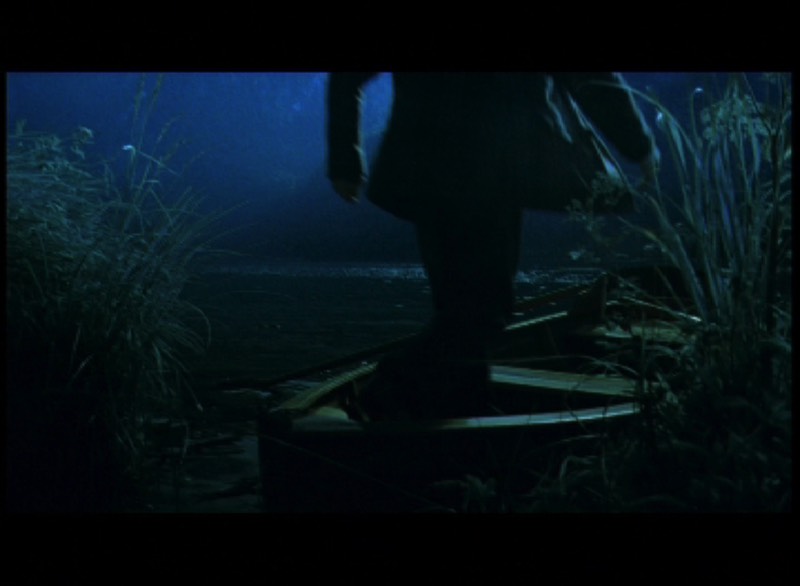
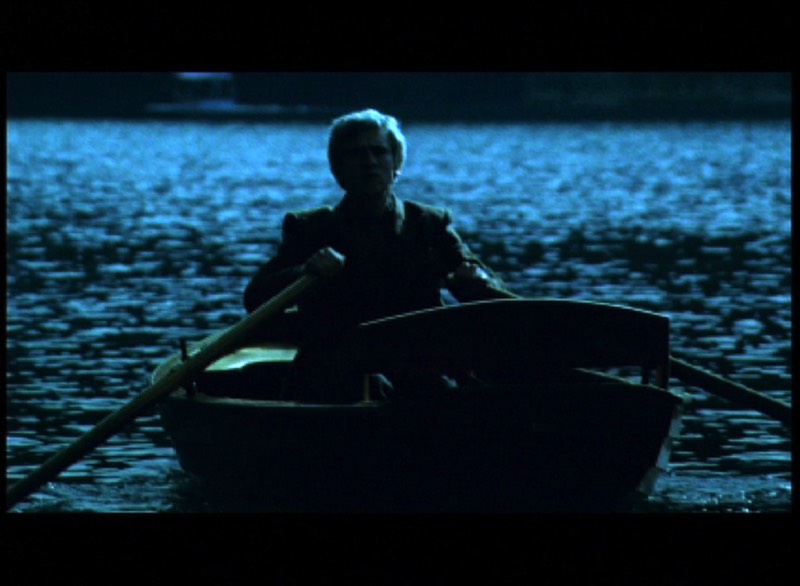
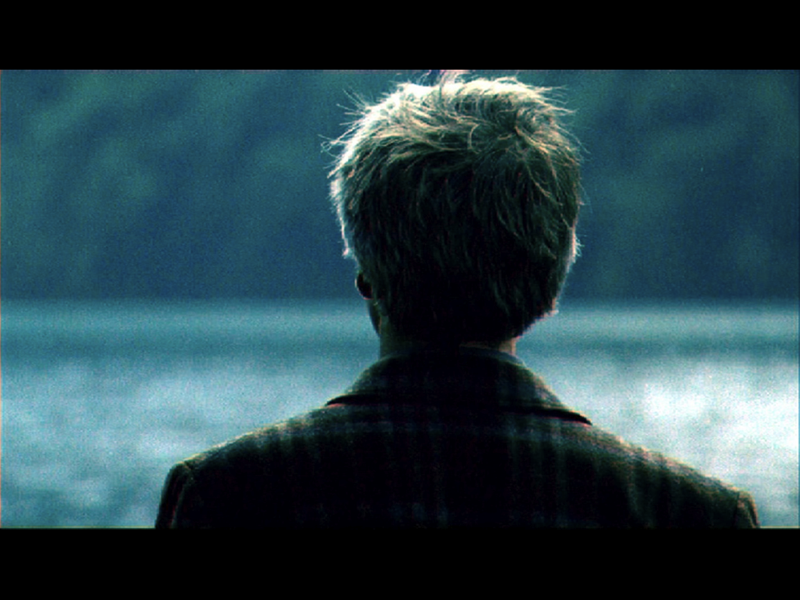
Sited with this, three neon works; one bears the words Dust Veil encased in perspex is lying on the ground. A dust veil is caused by a volcano eruption when ashes or dust are thrown into the air, at it most extreme it can cause a complete blackout, a phenomenon known “volcanic winter”. Fixed high on the wall a neon of the words Dark again. An eclipse blocks the sun for a period of time and causes a blackout, Lunar Eclipse - a final circular neon, echoes again the concerns of the film as the protagonist ruminates on the onset of darkness.
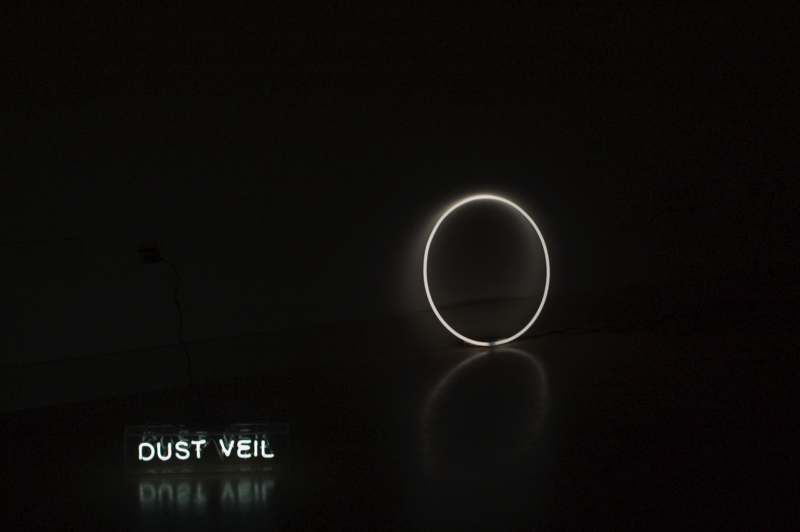
Placed casually below, to the right, leaning against the wall is a work titled The Ghost of Cadere. Conjuring the spirit of André Cadere, the consummate flâneur of the Situationist generation, a walking stick appears resting against a gallery wall. An indirect reference to Friedrich’s Wanderer, the gesture of this object’s inclusion in the exhibition repeats Cadere's actions, who would leave his sticks at art world events to which he hadn’t, or sometimes had, been invited. The sculptures were made from a number of individual sections which vary in size and color combinations and are composed to a strict mathematical equation, but in each work he would include a single error thus causing a rupture within both the work itself and its placement in an exhibition. An rupture echoed by Walker and Walker but rendered here in an off-white colour and relating to the doubling and echo occurring within the film Nightfall.
